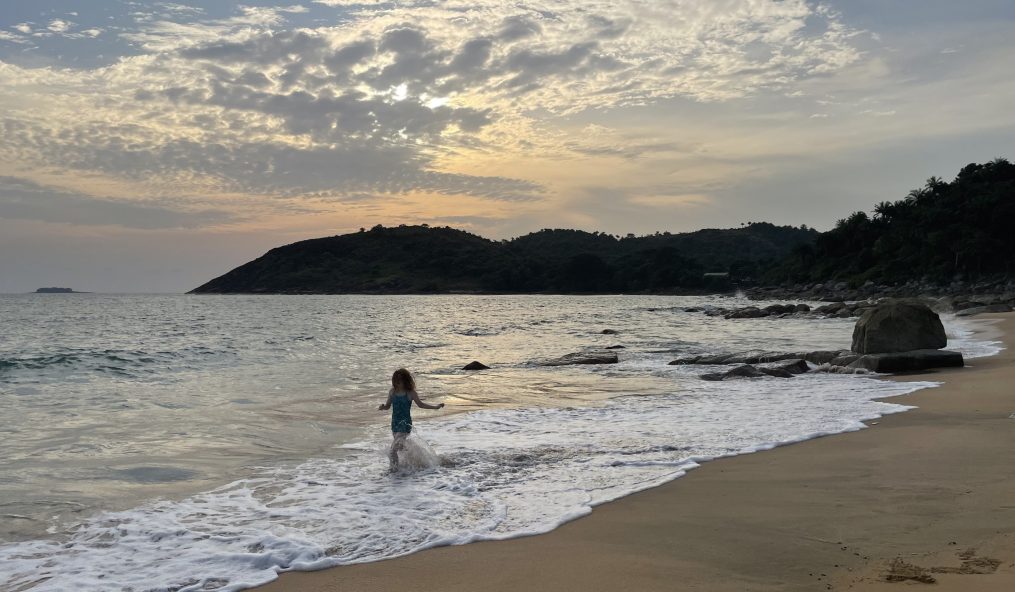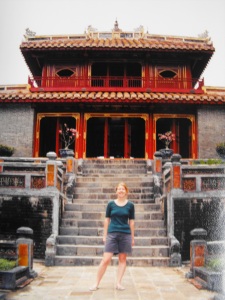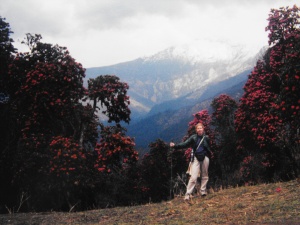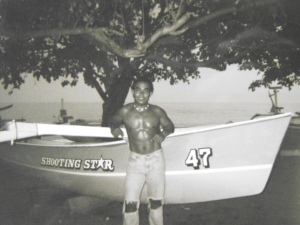Nanjing (南京), it means “south capital” but to me in the traditional Chinese fashion of associating long-winded English translations to a few characters it means “long weekend getaway from the sinking morass of endless visa adjudications.”
It had been 14 weeks since returning from my two-week May getaway. Fourteen weeks through a historically-busy, record-breaking crazy visa application summer. I needed a break.
I know this falls into the realm of a “first world problem” and that even at home there might be quite a few people who would roll their eyes at my whines regarding lack of vacation time, but to me I really and truly had reached a breaking point.
“Capture of Nanking Rain and a windstorm rage blue and yellow over Chung the bell mountain as a million peerless troops cross the Great River. The peak is a coiled dragon, the city a crouching tiger more dazzling than before. The sky is spinning and the earth upside down. We are elated yet we must use our courage to chase the hopeless enemy. We must not stoop to fame like the overlord Hsiang Yu. If heaven has feeling it will grow old and watch our seas turn into mulberry fields.” ~Mao Ze Dong, April 1949
I could not find a pretty quote about Nanjing. Despite its significant role in Chinese history it is its more recent history, the brutal subjugation of the city in 1937, that it is perhaps most famous for. The weekend might also have been an odd choice of destination considering it immediately followed China’s newest national holiday – “Victory Day” – marking the 70th anniversary of victory in WWII. Although it was announced by the Chinese government in May it did not occur to me as I was buying the train tickets in early August that perhaps the location of one of the greatest atrocities inflicted on the Chinese as part of the larger WWII conflict happened in Nanjing. I wondered why some of the trains were already booked full (though it could have as much to do with a multi-day holiday as anything else, most people were given both Thursday September 3 and Friday September 4 off).
Regardless, our mini holiday in Nanjing became my reward, my focus, my mantra.
Nanjing! Nanjing! Nanjing!
And the trip finally arrived – and I remembered how I love to travel and learn about new places, the history, the culture, and especially to see another place in the country where I serve. I also was reminded how it can be a wee bit challenging to travel with a toddler especially when I insist on trying to do things certain ways.
Like taking public transport. But I packed light and we were able to use not only the Shanghai metro line to reach the Hongqiao Railway station, get ourselves onto the bullet train to Nanjing (less than 2 hours – 300 kilometers or about 186 1/2 miles), then we easily maneuvered our way through the Nanjing metro system. Well, as easy as one can with a duffel bag, stroller with one malfunctioning wheel, and a preschooler. But then they made it easy for us – touch screens, choice of English, plenty of easy to read maps, and a direct 10 stop trip from Nanjing South Station to Gulou, our stop.
I booked us a room at the Intercontinental Nanjing, which occupies the lobby and floors 45-81 of Zifeng Tower, the tallest building in the city (at 1,480 feet tall). Regular guest rooms are on floors 49 to 71 and through a series of events we found ourselves with a room on the 71st floor! As we rode up the elevator, beginning on the 45th floor I thought that we were already well above the 19th floor I live on in Shanghai, which already seemed rather high up.
It was a bit of a cloudy day and our view was sometimes very nearly obscured during our visit – because sometimes we were inside a cloud.
After settling in we headed to the very old Jiming (Rooster Crowing) temple, one of the oldest in Nanjing. It was within walking distance of the hotel and I figured a worthy first stop. Because 3 ½ kids love old, historic Buddhist temples, right? She might have liked it more if we had not had to pass the Paleontology Museum on the way. Posters of cool-looking cartoon dinosaurs and a nearly full glass wall revealing some equally cool dinosaur skeletons just had to be on display. Any interest C might have had in Chinese/Nanjing/Buddhist history was quickly gone (I give my kid the benefit of the doubt). Then I had to keep hearing about the dinosaurs, the dinosaurs, the dinosaurs for the rest of the block.
Thank goodness the temple included three large incense sticks in their ticket entrance price. C took these to be drum sticks, specifically her drum sticks and the temple as her castle and was placated for a little while. She was even okay with climbing up all the stairs. Particularly as once on the third or so level she could look down and yell at her subjects. “Hey, all you all down there! This is C! This is my castle. I am the police! Please listen to me! Stop what you are doing!” When I asked her why she kept yelling she said it was because no one was listening. I pointed out she was yelling in English and that most, if not all, of the people coming in to the temple were Chinese. So she switched to yelling random Chinese words of her choosing. Good thing the Chinese generally like little kids.
At the top level, just below the pagoda, we enjoyed some time joining the crowd throwing coins into the large Chinese urn for good luck. C likes this kind of activity. Then I showed her where everyone was placing their incense sticks and demonstrated how we would do the same. She seemed completely on board until we actually lit them and placed them standing with the other incense. Then she lost it. As luck would have it (perhaps the temple gods were smiling down on us?) we turned a corner as she sobbed and found three perfectly nice incense sticks lying on a temple step. The day was saved!
We headed back down and then on to Ming Dynasty City Walls, apparently one of the largest city walls ever constructed in China and still with large portions intact. C was not impressed. She made it clear that she did not want to see any walls but instead wanted to see dinosaurs! It started to rain. It was around 4 pm and we were just up the street from the Paleontology Museum and so made the correct mom decision to return to the dinosaurs.
C skipped up the steps happily right into the arms of a museum curator who informed us the museum closed at 4. What? Who closes a museum at 4? Smart little C immediately broke into huge sobs accompanied by the word dinosaur in both English and Chinese. As the door was wide open and other kids and their parents were still in the museum, he relented and said we could just visit the dinos in the foyer. C perked up immediately – though this was short lived when she learned after ten minutes it was time to go and she walked out, lip pouted, shoulders hunched, dragging her feet. The curator told us to come back that weekend – open 9 am to 4 pm Saturday and Sunday!
An hour at the hotel pool and another 30 minutes in our awesome tub and C forgot all about dinosaurs.
The following morning we took the metro to the Nanjing Massacre Memorial Hall. Yeah, I sure do know how to pick the family friendly locations. But C is a good traveler and she was very good here as well.
It was a Saturday and the one after the new Victory Day holiday, so there was a long line, but with the exception of a few line jumpers it was managed very orderly and well. I have long wanted to visit Nanjing and I knew that when I did I would visit this memorial hall. This is a sobering place and is on par to visiting the Holocaust Museum in DC or a concentration camp like Auschwitz or the Hiroshima Memorial Peace Park or the Killing Fields of Cambodia – all of which I have visited. It is a hard place to visit yet also a “must-see” to understand a time in history and serve as witness to the horrors humans are capable of committing, appreciate the resiliency of survivors, and resolve in your heart to never allow this again.
We spent most of our time in the park area and not in the museum, though we did have some thirty or forty-five minutes inside. In theory I could have spent longer there – the displays are well-done and informative – but given the subject matter our total hour and a half at the memorial hall was all we could take. C demanded lunch and then either dinosaurs or elephants.
After consulting C elephants it was. And those elephants would be the large stone ones, along with several other stone animals, flanking the Sacred Way to the Ming Xiaoling Mausoleum, a UNESCO World Heritage Site, located at the foot of Purple Mountain. Thank goodness for those animals and the lovely shaded walk – C approved! She also did not mind the other walk with large stone soldiers flanking the way and climbing through some large gateways. She did show some rebellion at the Golden Water Bridge. The carved dragons, though I pointed out they looked like a bit like dinosaurs, did not impress her in the least. Arms folded, she delivered me a few pointed raspberries in my direction, but agreed to soldier on.
The Mausoleum is huge. We passed through archways and walked through or around memorial halls finally to the large palace-like building at the end and we climbed up all those steps too. Little C bounded up them like a champ.
Although there might have still been time to make it over to the Sun Yatsen Mausoleum, had I still been a single woman, I called it day. C agreed this was an excellent decision. We still had to make our way all the way back from the tomb and find a way back to the hotel. This proved to be much more difficult than I expected as every single taxi driver I saw refused to stop. Finally we found a bus stop that took us to the metro and we were back to the hotel for the evening.
On Sunday morning I did try to reward C with a trip to the Paleontology Museum, after all she deserved it for being such a good sport the day before. But wouldn’t you know it we arrive at the museum around 9:30 am and they tell me it is closed all day. Poor little C. She was disappointed. I owe her some dinosaurs for sure.
We continued on to the Nanjing City Walls. C made it quite clear she did not want to see the “stupid walls.” She’s 3 and did not really use the word “stupid” but it was so implied in her huffy attitude. I insisted and she plodded alongside me, heavily sighing, shoulders hunched. It became warm – our hottest day so far and we were exposed up on the wall. And I began to think that maybe seeing the walls was okay but walking along them just might have been “stupid.” Sometimes mommy is wrong.
We did eventually make our way to the next gate, Xuanwu gate, from where we could descend from the walls and found ourselves in the middle of Nanjing’s Sunday matchmaking market. There are few things that matchmaking grannies and grandpas like to see more than a 3 year old, curly-blonde haired girl. C handled it pretty well.
Back at the hotel enjoying our welcome (farewell?) drink at the café while a hostess played peek-a-boo with C seemed a good way to end the trip. We successfully navigated ourselves back to the train station with the metro and onto the bullet train to Shanghai. Nanjing has a lot to offer and I think we will back. Maybe next time we will finally see the dinosaurs.





























